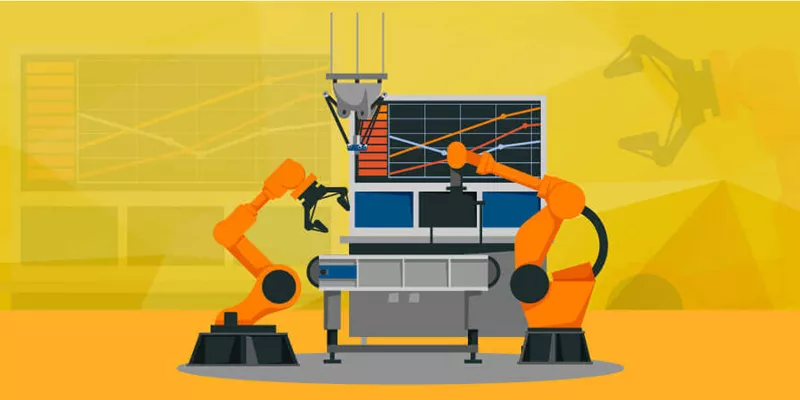7 Most Common Challenges with Test Automation and Modern QA
 Aseem Gupta
December 6, 2019
Aseem Gupta
December 6, 2019
In modern QA, test automation engineers are too focused on continuous integration and automating tons of tests (most of them crappy) that it often leads them to lose sight of the big picture. Tons of automation tests does not mean better quality software. Even if all your functional tests are automated, it wouldn't say the absence of bugs.
Before you pour in vast sums of money to hire test automation experts, you may want to take a look at these common challenges with test automation and modern QA to be able to plan for them:
7 Common challenges with test automation and modern QA
1. Deciding on an appropriate testing approach
- Before you go ahead and buy your test automation tools, it is essential to be clear on the testing approach you're going to follow.
- Find out the tests you need to automate and ones you can leave as manual. To make the right decision, start by determining the test cases that are most important to you or are more prone to failure risks.
- While assessing the level of risk, ensure to have an idea of the financial impact of a potential failure, probability of failure for each vulnerability, and human and equipment safety issues.
2. Evaluating tool vendors and choosing the right automation tools
- A multitude of testing tools are available to automate manual tests. However, not all of them are safe to use. If you end up choosing any random testing tools, your organization will not have a suitable automation tool for your testing teams.
- If you’re finding it hard to evaluate the different testing tools either due to a lack of expertise, indefinite knowledge or exceeding costs, consider outlining a set of tool requirements criteria and getting inputs from professionals who have experience in using those tools.
- While choosing a testing tool, ensure to go with one that not only meets your testing needs but also improves your overall software testing process and involves minimal risk. Do thorough research while comparing the proposals of different tool vendors.
3. Collaborating effectively with one another
- Since modern QA requires constant planning, communication, and collaboration between different departments to be able to deliver timely test results, this often can become a big challenge for businesses. But well, it takes both sides to build a bridge.
- A right way in which test automation engineers can overcome this is by being actively involved with developers, manual testers, senior management, technical architects, stakeholders, and customers alike. Remember that silence is considered deadly in teamwork.
4. Poor testing practices in place
- If your organization follows poor testing practices, test automation or modern QA might not be your best choice.
- Have a proper organization and schedule for your tests, and ensure they are good at identifying defects. The more active your testing practices are, the better would modern QA integrate into your business.
5. Maintaining automated tests
- After the automation software gets updated or changed, the automated tests are required to be updated too. Lots of effort and costs go into this. This is a significant reason why test automation initiatives end up being abandoned in businesses.
6. Infrastructure failures because of no focus on testing of the infrastructure
- Failure in integration points, failure in communicating with third-party apps, failure of requests to the API endpoints, and intermittent issues are some of the shared infrastructure failures that your business might experience after implementing test automation.
- Since test automation engineers majorly focus on executing tons of automated functional tests and battling with automation code, they lose sight of the bigger picture. To prevent infrastructure failures, test automation engineers must consider being selective on what to automate based on the risk factor.
- It is essential to focus on performance, security, and testing of the infrastructure. Ensure to find out whether automating a specific test would be worth the effort and cost.
7. Accounting for all licensing, operating and maintenance costs
- Modern QA requires significant capital investment. Implementing test automation into your business would include both hardware and software costs. But, implementing it is only the initial stage of test automation. Licensing, operating, training and maintenance costs can add up to a lot.
- To overcome this challenge, you can carefully plan out your test automation. This will not only help your business prevent the costs of defects in production but also attain better quality, precision, and productivity.
Summing up
If you want to change the quality of your software, you'll have to change the process you follow to create it. Good quality software isn't an accident; it is the result of intelligent and thoughtful effort.
Automating functional tests isn’t enough to identify pressing issues that negatively impact the quality of software delivered. If done thoughtfully and adequately, test automation can lead to better productivity and quality, otherwise to a catastrophic failure.
Aseem Gupta is a Senior QA Engineer at Intelegencia. When he is not working, you can find him doing creative writing, photography
Comment(s)
_BlogComment.Message
Leave your comment
Get Started Now
Future-proof your brand with Intelegencia. Fill out the form and we'll be in touch soon.
